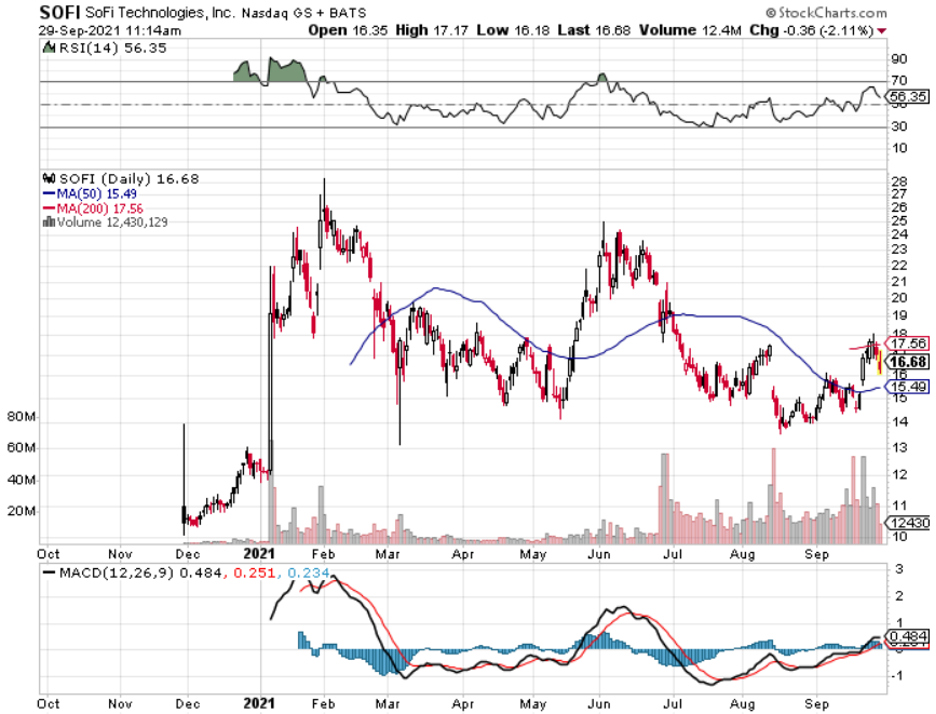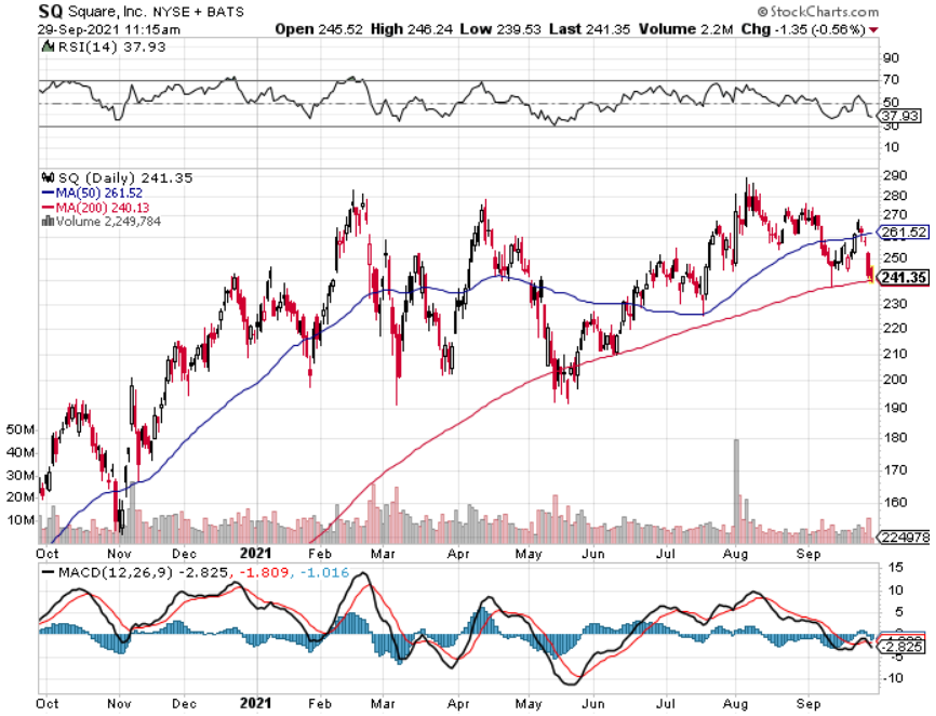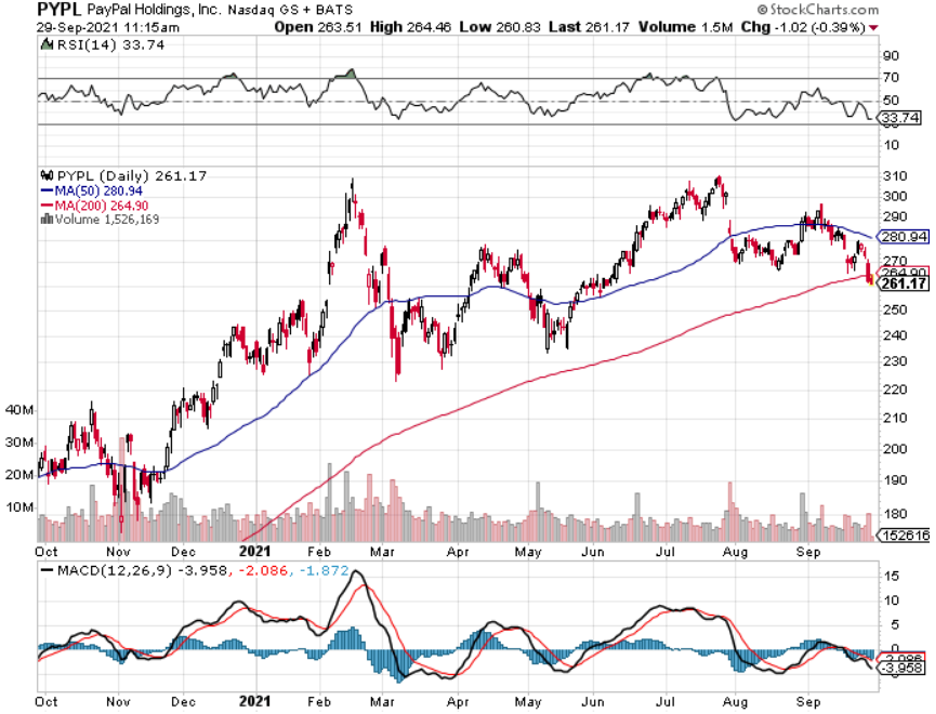SoFi Technologies (SOFI), a recent SPAC, is a one-stop fintech platform that provides loan refinancing, private student loans, personal loans, auto loans, mortgage loans and investments, as well as insurance products for renters, homeowners, automobiles and others.
They are a fintech company at a time when fintech companies are fetching premiums.
That’s always a great place to be.
Fintech's outsized attention stems from the position they sit at in today’s world — they truly exist at the intersection of the future and technology.
SoFi’s stock reacted poorly from the missed earnings-per-share estimates, and the stock is down roughly around 20% since the Aug. 12 release.
Volatility is a familiar pain point for emerging tech stocks and the investing backdrop continues to be fickle and frothy.
What do I like about SoFi today?
They are making progress on their overall strategic vision and show signs they might live up to the hype.
Total revenue in the technology division declined from the sequential quarter, while total revenue in the lending segment grew a respectable 12.4%.
But in the financial services segment, which is by far the smallest of the three in terms of revenue, total revenue of more than $17 million grew 164% from the first quarter of 2021 and more than 600% from the second quarter of 2020.
Experiencing green shoots in new businesses gives investors hope that they can turn divisions into cash cows.
The company is seeing a boost coming from new members on its online brokerage, SoFi Invest, as well as from the new equity capital markets and advisory services offerings introduced during the quarter.
SoFi is also getting in on the crypto space, allowing investments in equities, cryptocurrencies, fractional shares, and robo-investing services.
I also love that SoFi is in the process of obtaining an official bank charter — this also opens the door to many new opportunities that require deposits.
It would be accurate to say they are heading down the path of PayPal (PYPL) and Square (SQ), and there are plenty of green pastures to till in this space.
Just look at these two firms’ stock performance and one will understand there are worse places to be in the economy.
Eventually, the company will be able to unearth cross-selling opportunity, along with the SoFi Money checking account product, as members will be easily able to transfer funds to and from their checking and brokerage accounts.
SoFi Invest also doesn't currently offer options trading. In 2020, the online brokerage, Robinhood generated 46% of its total revenue from options trading, so it certainly could be a boost if SoFi eventually offers the feature.
By providing consumers with free access to high-frequency products and lower costs, SoFi eases consumers into the ecosystem.
Then, with the help of a simple UI/UX, customers are drawn toward ancillary products.
The vision they are beholden to is that of insatiable user growth that will nudge the incremental investor into buying more shares of SoFi.
Another reason to get behind SoFi is due to the company bringing market-leading deployable digital platform that is rapidly gaining traction in today’s economy.
In this current climate, growth stocks don’t have the same appeal that they did last year, or even in 2012.
The Nasdaq is frothy and looking for new drivers to take us a leg higher and obviously higher interest rates do a lot to diminish the narrative for stocks like SoFi.
I will say that if SoFi’s stock comes down to $14 which would represent a remarkable discount from the $25 the stock was trading in February, then I would pull the trigger at that point.
This isn’t a stock worth chasing because it’s susceptible to missing forecasts, earnings, EPS, and revenue targets.
SoFi has a hard slog ahead of itself to become the next PayPal or Square, but if they achieve a fraction of the success the aforementioned did, then it will become a $30 stock.




